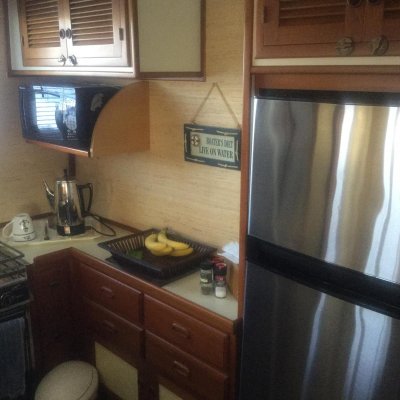O C Diver
Guru
- Joined
- Dec 16, 2010
- Messages
- 12,878
- Location
- USA
- Vessel Name
- Slow Hand
- Vessel Make
- Cherubini Independence 45
I'm considering getting a new refrigerator for the boat. Currently looking at apartment refrigerators. As with many boat items, wanted to get some power consumption numbers. According to the government  , one of the units I'm looking at should consume around .8 KW per day. While I plan to measure mine for 3 weeks next month while going North, I figured some of you solar power live aboards might have some real numbers already.
, one of the units I'm looking at should consume around .8 KW per day. While I plan to measure mine for 3 weeks next month while going North, I figured some of you solar power live aboards might have some real numbers already.
What I'm looking for are actual usage numbers versus theoretical calculations. If you could give me real numbers per day or a week and whether your in the tropics or the arctic, I would be very appreciative.
Thanks!
Ted
What I'm looking for are actual usage numbers versus theoretical calculations. If you could give me real numbers per day or a week and whether your in the tropics or the arctic, I would be very appreciative.
Thanks!
Ted



 +1
+1